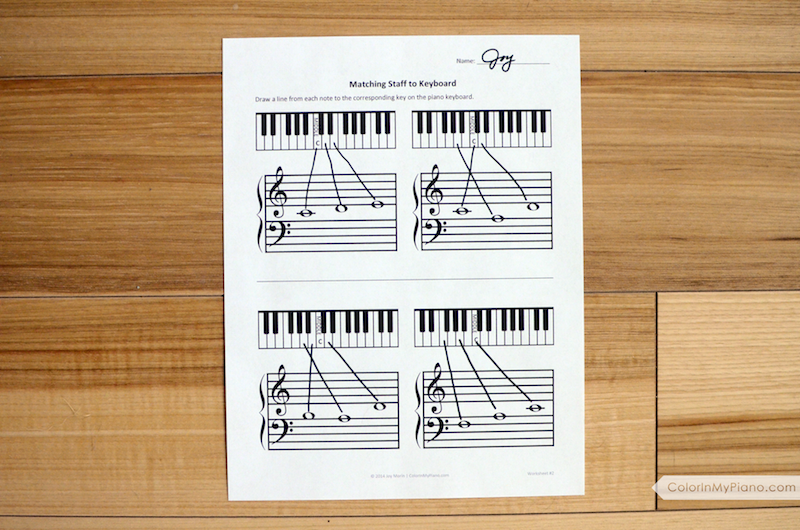Have you ever had students correctly identify a note on the staff, but proceed to play the note in the wrong octave on the keyboard? I think piano teachers all around the world can raise their hands on that one. 🙂
Being able to identify note names on the staff by letter name is important, but not as important as being able to instantly connect a note on the the staff to a particular piano key. This is why, during flashcard drills or note-naming games, I require students to play the corresponding piano key as they give a verbal answer of the letter name.
With all of this in mind, I created a new set of worksheets that require students to draw a line to match notes on the staff to the corresponding piano key. Although students may decide to figure out the letter names of the notes as they solve each problem, it is not the end goal — they must go a step further and connect the note to the keyboard.

By arranging a series of notes on each staff (instead of just one note), my hope was that students would develop a stronger understanding of how intervals on the keyboard look when placed on the staff. Read more about interval reading here.
Download the free PDF by visiting the Printables > Worksheets page and scrolling down to “Matching Staff to Keyboard Worksheets.” There are five worksheets within the PDF, arranged in progressive order by difficulty. The first worksheet uses only the landmark notes Bass F, Middle C, and Treble G. The following worksheets each gradually increase the range of the notes on the staff.
 Matching Staff to Keyboard Worksheets (327.4 KiB, 29,799 hits)
Matching Staff to Keyboard Worksheets (327.4 KiB, 29,799 hits)
Update: I’ve created a new digital version of this worksheet that can be completed digitally on your iPad/tablet.



Great thinking (as always!), Joy. For many years, I used the old Schaum Keynote Spellers for this very reason. Plain “notespellers” didn’t provide the correlation. The Schaum, I thought, was not particularly well-organized or paced, but at least the connection was made between staff and keyboard. I encourage my students to think of each key as an “individual”, with its own sound and place to “live” on the staff. Keep up the good work!
Thanks, Anita! I love your idea of personifying each note as an individual with it’s own sound and home on the staff!
Where is the answer sheet for all worksheets ?